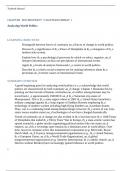Class notes
Official Solutions Manual - The Global Future: A Brief Introduction to World Politics by Kegley 5e
- Course
- Institution
- Book
- Access authentic Manual specifically for your textbook - All material covered - verified answers - Instant download
[Show more]



